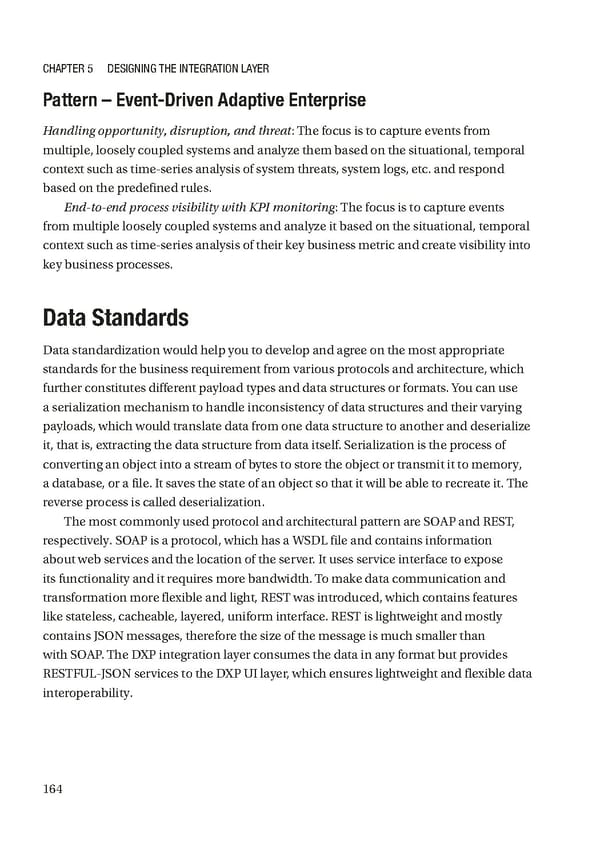Chapter 5 Designing the integration Layer Pattern – Event-Driven Adaptive Enterprise Handling opportunity, disruption, and threat: The focus is to capture events from multiple, loosely coupled systems and analyze them based on the situational, temporal context such as time-series analysis of system threats, system logs, etc. and respond based on the predefined rules. End-to-end process visibility with KPI monitoring: The focus is to capture events from multiple loosely coupled systems and analyze it based on the situational, temporal context such as time-series analysis of their key business metric and create visibility into key business processes. Data Standards Data standardization would help you to develop and agree on the most appropriate standards for the business requirement from various protocols and architecture, which further constitutes different payload types and data structures or formats. You can use a serialization mechanism to handle inconsistency of data structures and their varying payloads, which would translate data from one data structure to another and deserialize it, that is, extracting the data structure from data itself. Serialization is the process of converting an object into a stream of bytes to store the object or transmit it to memory, a database, or a file. It saves the state of an object so that it will be able to recreate it. The reverse process is called deserialization. The most commonly used protocol and architectural pattern are SOAP and REST, respectively. SOAP is a protocol, which has a WSDL file and contains information about web services and the location of the server. It uses service interface to expose its functionality and it requires more bandwidth. To make data communication and transformation more flexible and light, REST was introduced, which contains features like stateless, cacheable, layered, uniform interface. REST is lightweight and mostly contains JSON messages, therefore the size of the message is much smaller than with SOAP. The DXP integration layer consumes the data in any format but provides RESTFUL-JSON services to the DXP UI layer, which ensures lightweight and flexible data interoperability. 164
 Building Digital Experience Platforms Page 180 Page 182
Building Digital Experience Platforms Page 180 Page 182